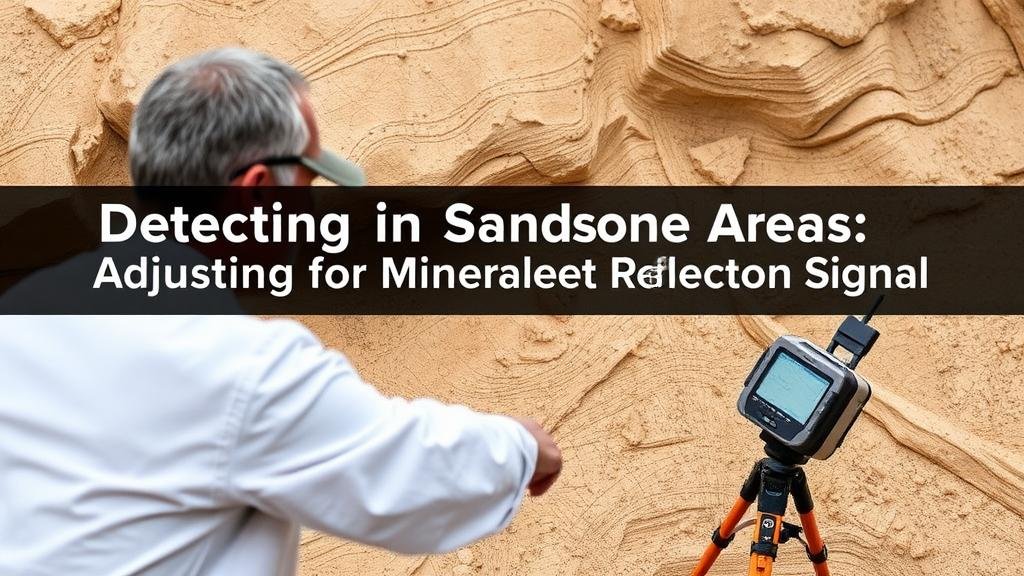Detecting in Sandstone Areas: Adjusting for Mineral Reflection Signals
Detecting in Sandstone Areas: Adjusting for Mineral Reflection Signals
Detecting mineral deposits in sandstone areas relies on understanding how different minerals reflect electromagnetic signals. The geological structure of sandstone regions can complicate detection efforts, as various factors influence the interaction between electromagnetic waves and the mineral composition. This article delves into detection methodologies, the significance of mineral reflection signals, and practical approaches for optimizing detection results in sandstone environments.
Understanding Sandstone Composition
Sandstone is predominantly composed of quartz and feldspar, cemented with silica or carbonate. Its porous nature allows for water and gases to move through the rock, which can influence mineral distribution. The mineralogical composition affects the electromagnetic characteristics, thus impacting detection strategies.
The Role of Mineral Reflection Signals
Mineral reflection signals are crucial in electromagnetic surveys as they indicate the presence of specific minerals. Each mineral has a unique spectral signature based on its chemical composition and structure. For effective detection in sandstone areas, it is essential to calibrate methods that account for overlapping signals and background noise from the matrix.
Detection Techniques
Several detection techniques are employed in mineral exploration within sandstone regions. Understanding these methods and their applicability in different contexts is vital for successful mineral assessment.
Geophysical Methods
- Electrical Resistivity Tomography (ERT): This method measures the electrical resistivity of the soil and rock layers. In sandstone, variations in porosity and fluid content can lead to significant resistivity differences, aiding in identifying mineral deposits.
- Ground Penetrating Radar (GPR): GPR is effective in mapping subsurface structures. Sandstones layered architecture can provide clear reflections, making it easier to delineate potential mineral zones.
Remote Sensing
Remote sensing techniques can provide a broad overview of mineral distributions across large sandstone areas. Spectroscopic analysis and satellite imagery help in identifying mineralogical variations. For example, Landsat imagery can detect alterations in the mineralogy of sandstone due to weathering or human activities.
Adjusting for Signal Variability
One of the challenges in detecting mineral signatures in sandstone is the signal variability caused by natural factors. Adjusting detection strategies to account for these variations is essential.
Calibration Methods
- Ground Truthing: This process involves collecting actual mineral samples from specific locations and comparing them with detection results to refine spectral models.
- Statistical Analysis: Employing statistical techniques such as Principal Component Analysis (PCA) can help in isolating relevant signals from background noise, improving the clarity of mineral detection.
Case Studies
Understanding the practical application of detection methodologies is enhanced through case studies that highlight successes and challenges.
Case Study: The Mojave Desert
Research conducted in the Mojave Desert demonstrated the effectiveness of ERT combined with GPR to detect buried mineral deposits in sandstone formations. The integration of results from both methods allowed geologists to accurately map the extent of mineralization, demonstrating a reliable detection methodology in a complex geological setting.
Case Study: The Appalachian Region
In the Appalachian region, a combination of remote sensing and ground checks confirmed the presence of clay minerals in sandstone deposits. Using satellite imagery and subsequent field validation, significant mineralization was identified, leading to targeted exploration efforts.
Conclusion
The exploration and detection of mineral deposits in sandstone regions require a nuanced understanding of mineral reflection signals and their adjustments in detection strategies. By leveraging sophisticated geophysical methods, remote sensing, and calibration techniques, geologists can improve their accuracy and efficiency in locating valuable minerals.
To enhance detection success in sandstone areas, professionals should:
- Use a combination of detection techniques tailored to the specific geological and mineralogical context.
- Incorporate statistical analysis and ground truthing to refine signal interpretation.
- Stay informed about advancements in remote sensing technologies and insights from recent case studies.
By applying these strategies, mineral exploration enterprises will be better positioned to identify and extract resources from complex sandstone formations effectively.



